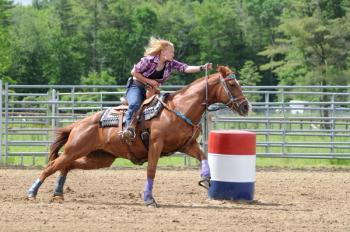
From soil to systemic disease: Understanding and managing Valley fever in veterinary patients

Learn about the impact of Valley fever on pets, including symptoms, diagnosis, treatment options, and emerging vaccine developments in veterinary care.
Coccidioidomycosis, also known as Valley fever, is caused by the dimorphic fungi Coccidioides (Coccidioides posadasii and Coccidioides immitis), which live in the soil in dry and hot environments. In the United States, Coccidioides is most common in the southwest, specifically in Arizona and southern California, where it is considered endemic, but also as far north as Washington and as far east as Texas.1 Internationally, it is also seen in Mexico and parts of Central and South America.1
Arthroconidia are inhaled from the environment and phagocytosed by alveolar macrophages, where they first develop into a spherule. The spherule then develops hundreds of endospores inside it, which eventually rupture, releasing the endospores. Those endospores cause local pyogranulomatous inflammation and can disseminate via lymphatics to the tracheobronchial lymph nodes and/or hematogenous throughout the rest of the body.1
Clinical manifestations
Clinical signs of Coccidioides can range from asymptomatic to life-threatening. Most commonly, dogs experience mild signs such as coughing, lethargy, hyporexia, fever, and weight loss, all of which can present acutely or chronically.1 If there is dissemination, clinical signs will vary based on the site which commonly include the central nervous system, bone, eyes, skin and pericardium. Neurologic signs may include seizures, which is the most common, central vestibular signs, head pressing and back pain or paresis.2 Coccidioides osteomyelitis in the appendicular bones often presents with lameness, pain, or a visible swelling.3 Cardiac/pericardial involvement often leads to right-sided heart failure with ascites and/or pleural effusion.4
Diagnosis
The diagnosis of Coccidioidomycosis can be made using serology, cytology, histopathology, or fungal cultures. Most commonly, diagnosis is based on antibody serology, consisting of IgM and IgG titers via an agar gel immunodiffusion (AGID) assay.1 IgM antibodies are generally able to be detected within 2-5 weeks, and IgG in 8-12 weeks after initial infection.1 There is no documented correlation of initial titers and disease severity; therefore, dogs with low titers can have significant disease, and on the other hand, dogs in endemic areas can have positive titers from exposure alone.3,5,6 The author generally treats all positive dogs with consistent clinical signs, even with low titers, and will treat asymptomatic dogs with positive results if the titer is 1:8 or higher. False negative results may occur in up to 13% of cases.7
Over the past few years, a point-of-care lateral flow assay (LFA), sōna Coccidioides LFA (IMMY, Norman, Oklahoma), has also become commercially available and subsequently tested in comparison to AGID in canine patients.8,9 In comparison to AGID, a study showed that the point of care LFA had a positive predictive value of 100% and a negative predictive value of 75%.9 This point-of-care test can be helpful in situations where teams may be looking to provide more information quickly, either prior to same-day additional procedures/testing or to euthanasia. As this is a qualitative test, and there can be false negatives, it is still recommended to submit titers for confirmation and monitoring.
Cytology from aspirates, fluid or skin impressions may also show Coccidioides spherules and/or endospores, but this has a generally low sensitivity and can be easy to miss due to low numbers of organisms.1 Fungal cultures can also be used, but due to potentially long incubation time and human health hazards to laboratory workers, this is not commonly performed.1
Treatment options
Azole antifungal therapy is the mainstay of treatment for Valley fever, with fluconazole being most common due to its lower cost. In clinical practice, fluconazole is generally dosed close to 10 mg/kg twice daily.2,3,10 Fluconazole comes in generic 50 mg, 100 mg, 150 mg and 200 mg tablets, which can be easily halved to facilitate dosing as close to the 10 mg/kg, even in small patients. There is also a generic 40 mg/mL solution available.
Itraconazole is preferred over fluconazole in cases with bone or joint involvement due to increased bone penetration11 and is commonly used in cases with refractory disease on fluconazole. The recommended dosing for itraconazole is 5 mg/kg once daily. Itraconazole comes in 100 mg generic capsules as well as human-labeled and veterinary-labeled liquid solutions in a 10 mg/mL concentration. Newer-generation azoles such as posaconazole and voriconazole can also be considered in refractory cases.12,13 Hepatotoxicity can occur in up to 26% of patients on azole antifungal therapy.14
It is recommended to avoid compounding these medications. In a 2018 study comparing compounded, generic and brand-name itraconazole, 95% of animals in the compounded group had subtherapeutic itraconazole blood levels,15 and a 2017 study on compounded fluconazole showed poor accuracy and precision in compounded fluconazole suspension.16
For dogs with ocular Valley fever, enucleation may be required, and in dogs with Valley fever pericarditis, subtotal pericardectomy and epicardial excision may be required.4 In patients with severe infection or refractory cases, amphotericin B can be considered.1
Monitoring
Treatment duration can range from 6 months to many years, but in the author’s experience, the average treatment duration is 9-12 months. Antibody titers should decrease with successful treatment.2,3,10 Treatment is commonly continued until the titer is 1:2 or lower and the initial lesions have resolved.1 Titers are commonly checked every 3-6 months. Many clinicians will treat for an additional 3-6 months after the first negative or low (1:1 or 1:2) titer, rechecking the titer again prior to discontinuing treatment. Osteomyelitis and CNS cases often require long-term to potentially lifelong treatment.2,3
A Valley fever vaccine?
A coccidioidomycosis vaccine, an attenuated live vaccine using an avirulent strain of Coccidioides, is currently in development by Anivive Lifesciences.17 A 2021 study where research dogs were vaccinated (initial + booster at day 28) and then subsequently infected with Coccidioides, showed that vaccinated dogs had a significantly reduced fungal burden and disease scores, with about 90% of those dogs having minimal measures of disease.18Keep an eye out for more information in the future for more studies on vaccine, FDA approval and commercial availability.
Valley fever in cats
Although less common than in dogs, likely due to their indoor lifestyle, Valley fever can also be seen in cats. Similar to dogs, clinical signs are often related to disease localization, which can include respiratory signs, skin lesions, lameness, neurologic signs and ocular lesions.19 Dissemination is common in cats, with one study reporting dissemination in 60% of cats, with the skin being the most common site of dissemination.19 Diagnosis is generally made from antibody serology and/or cytology, similar to dogs.19 Treatment is with azole antifungal therapy, with fluconazole being the first-choice medication at 50 mg/cat twice daily, with alternative azole therapy (itraconazole and posaconazole) or amphotericin B in refractory cases.19
References
- Sykes JE. Canine and Feline Infectious Diseases. Elsevier/Saunders; 2014.
- Kelley AJ, Stainback LB, Knowles KE, Moore TW, Plummer SB, Shoup OR. Clinical characteristics, magnetic resonance imaging features, treatment, and outcome for presumed intracranial coccidioidomycosis in 45 dogs (2009‐2019). Journal of Veterinary Internal Medicine. 2021;35(5):2222-2231. doi:10.1111/jvim.16243
- Shaver SL, Foy DS, Carter TD. Clinical features, treatment, and outcome of dogs with coccidioides osteomyelitis. Journal of the American Veterinary Medical Association. 2022;260(1):63-70. doi:10.2460/javma.20.12.0696
- Heinritz CK, Gilson SD, Soderstrom MJ, Robertson TA, Gorman SC, Boston RC. Subtotal pericardectomy and epicardial excision for treatment of coccidioidomycosis-induced effusive-constrictive pericarditis in dogs: 17 cases (1999–2003). Journal of the American Veterinary Medical Association. 2005;227(3):435-440. doi:10.2460/javma.2005.227.435
- Johnson LR, Herrgesell EJ, Davidson AP, Pappagianis D. Clinical, clinicopathologic, and radiographic findings in dogs with coccidioidomycosis: 24 cases (1995–2000). Journal of the American Veterinary Medical Association. 2003;222(4):461-466. doi:10.2460/javma.2003.222.461
- Shubitz LF, Butkiewicz CD, Dial SM, Lindan CP. Incidence of coccidioides infection among dogs residing in a region in which the organism is endemic. Journal of the American Veterinary Medical Association. 2005;226(11):1846-1850. doi:10.2460/javma.2005.226.1846
- Gunstra A, Steurer JA, Seibert RL, Dixon BC, Russell DS. Sensitivity of serologic testing for dogs diagnosed with coccidioidomycosis on histology: 52 cases (2012–2013). Journal of the American Animal Hospital Association. 2019;55(5):238-242. doi:10.5326/jaaha-ms-6772
- Schlacks S, Vishkautsan P, Butkiewicz C, Shubitz L. Evaluation of a commercially available, point-of-care Coccidioides antibody lateral flow assay to aid in rapid diagnosis of coccidioidomycosis in dogs. Med Mycol. 2020;58(3):328-332. doi:10.1093/mmy/myz067
- Reagan KL, McHardy I, Thompson GR, Sykes JE. Clinical performance of a point‐of‐care coccidioides antibody test in dogs. Journal of Veterinary Internal Medicine. 2021;35(2):965-969. doi:10.1111/jvim.16087
- Carter TD, Fuller BD, Shaver SL, Foy DS. Retrospective evaluation of the efficacy of fluconazole for the treatment of coccidioidomycosis in dogs: 49 cases (2015–2020). Journal of the American Veterinary Medical Association. 2022;260(10):1200-1205. doi:10.2460/javma.22.01.0006
- Felton T, Troke PF, Hope WW. Tissue penetration of antifungal agents. Clinical Microbiology Reviews. 2014;27(1):68-88. doi:10.1128/cmr.00046-13
- Shubitz LF, Schlacks S, Vishkautsan P, Butkiewicz CD, Worthing KA. Posaconazole treatment of refractory coccidioidomycosis in dogs. Journal of Veterinary Internal Medicine. 2021;35(6):2772-2777. doi:10.1111/jvim.16282
- Raghu C, Reagh C. Novel Treatment of Disseminated Coccidioidomycosis in a Dog with Voriconazole. Case Rep Vet Med. 2018;2018:1785748. Published 2018 Apr 5. doi:10.1155/2018/1785748
- Mazepa ASW, Trepanier LA, Foy DS. Retrospective comparison of the efficacy of fluconazole or itraconazole for the treatment of systemic blastomycosis in dogs. Journal of Veterinary Internal Medicine. 2011;25(3):440-445. doi:10.1111/j.1939-1676.2011.0710.x
- Renschler J, Albers A, Sinclair-Mackling H, Wheat LJ. Comparison of compounded, generic, and innovator-formulated itraconazole in dogs and cats. Journal of the American Animal Hospital Association. 2018;54(4):195-200. doi:10.5326/jaaha-ms-6591
- Laporte CM, Cruz-Espindola C, Thungrat K, Schick AE, Lewis TP, Boothe DM. Quality Assessment of fluconazole capsules and oral suspensions compounded by pharmacies located in the United States. American Journal of Veterinary Research. 2017;78(4):421-432. doi:10.2460/ajvr.78.4.421
- Biologics: Anivive Lifesciences. Biologics | Anivive Lifesciences. Accessed June 3, 2025.
https://www.anivive.com/treatments/biologics . - Shubitz LF, Robb EJ, Powell DA, et al. Δcps1 vaccine protects dogs against experimentally induced coccidioidomycosis. Vaccine. 2021;39(47):6894-6901. doi:10.1016/j.vaccine.2021.10.029
- Arbona N, Butkiewicz CD, Keyes M, Shubitz LF. Clinical features of cats diagnosed with coccidioidomycosis in Arizona, 2004–2018. Journal of Feline Medicine and Surgery. 2019;22(2):129-137. doi:10.1177/1098612x19829910
Newsletter
From exam room tips to practice management insights, get trusted veterinary news delivered straight to your inbox—subscribe to dvm360.




